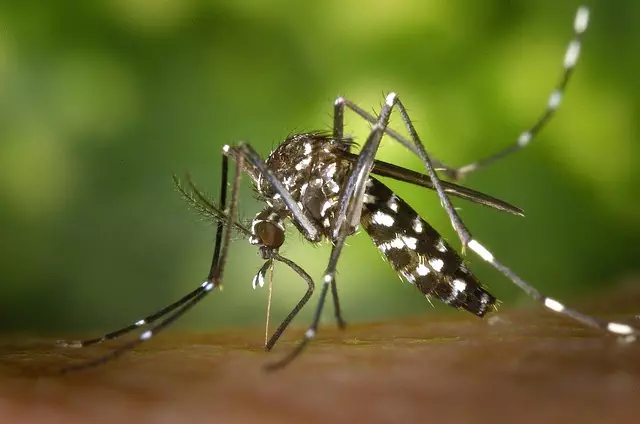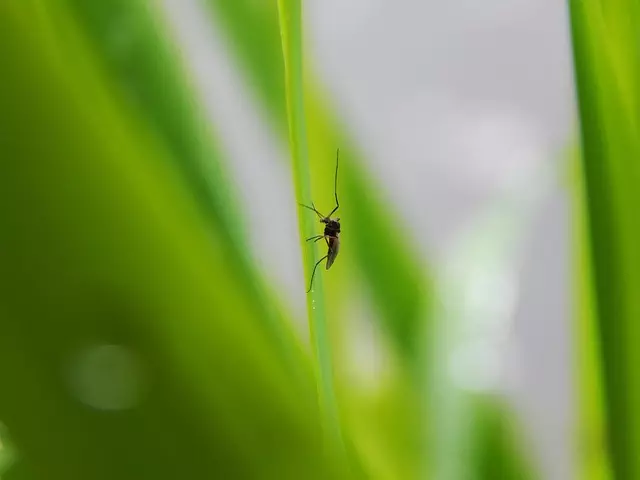Mosquito breeding patterns are crucial for effective mosquito control. Standing water in everyday items like buckets, tires, and bird baths serves as ideal breeding grounds for females to lay eggs. Key environmental factors like temperature, humidity, and water availability impact their lifecycle. Strategies include eliminating breeding sites, managing water bodies, introducing natural predators, using repellents (chemical & natural), physical barriers, biological control, community education, and long-term IPM practices. Successful global programs demonstrate the power of integrated approaches in reducing mosquito populations and mitigating disease risks like Zika, West Nile, and malaria.
Mosquito breeding is a complex process driven by environmental factors, making effective mosquito control a multifaceted challenge. Understanding where and how mosquitoes breed is crucial in implementing tailored strategies. This article delves into various aspects of mosquito control, from identifying breeding sites and exploring chemical and natural repellents to examining biological control methods and community involvement. We also present long-term strategies and successful case studies, offering comprehensive insights for effective mosquito control.
Understanding Mosquito Breeding Patterns

Mosquito breeding patterns are a crucial aspect of mosquito control, as understanding where and how they reproduce allows for more effective management strategies. These insects breed in standing water, with their life cycle beginning when females lay eggs on the surface or near the waterline of stagnant pools. The eggs then hatch into larvae, which can remain in the water for several weeks, feeding on organic matter before transforming into pupae. This process concludes with the emergence of adult mosquitoes, ready to feed and reproduce further.
Identifying these breeding sites is a critical step in mosquito control programs. Common sources include discarded tires, bird baths, clogged gutters, and buckets or containers left outdoors. By eliminating or treating these areas regularly, communities can significantly reduce mosquito populations and the risks associated with their bites, such as the transmission of diseases like Zika, West Nile, and malaria.
Identifying Common Breeding Sites

Mosquito breeding sites are often overlooked, yet they play a significant role in mosquito control efforts. Common breeding grounds include standing water in buckets, flower pots, discarded tires, and stagnant pools in low-lying areas. Even small accumulations of water can become fertile ground for mosquitoes, as female mosquitoes lay their eggs in stagnant water. Identifying and eliminating these sites is crucial in reducing mosquito populations and preventing the spread of diseases they carry.
Regular inspections and maintenance are essential to address these breeding grounds. Property owners and local authorities should ensure proper drainage systems are in place and that water containers are tightly sealed or emptied regularly. By taking proactive measures, communities can significantly curb mosquito breeding and, consequently, minimize health risks associated with mosquito control.
Environmental Factors Influencing Reproduction

Mosquitoes’ reproductive success is heavily influenced by environmental conditions, making mosquito control a multifaceted approach. Factors such as temperature, humidity, and water availability play crucial roles in their breeding cycle. Warmer temperatures accelerate development, reducing the time from egg to adult. Humidity ensures optimal egg viability, while standing water—a common feature in urban areas—serves as ideal breeding grounds for many species. These environmental cues trigger eggs to hatch, emphasizing the need for integrated mosquito control strategies that address these very conditions.
Understanding these factors is vital for implementing effective mosquito control measures. For instance, managing water bodies and reducing standing water can physically limit breeding sites. Additionally, targeting specific temperature ranges or introducing natural predators and parasites can disrupt the reproductive process. Such an integrated approach, considering both biological and environmental aspects, is essential in the ongoing battle against mosquitoes and the diseases they transmit.
Chemical and Natural Repellents

Mosquito breeding control is a multifaceted approach to Mosquito control, aiming to reduce their population and minimize health risks associated with their bites. One of the most common methods involves the use of chemical repellents. These synthetic compounds are effective in deterring mosquitoes due to their ability to mask human odors or disrupt mosquito sensory systems. However, concerns about environmental impact and potential health risks for humans and wildlife have sparked interest in natural alternatives.
Natural repellents, derived from plants and essential oils, offer a greener solution to Mosquito control. Compounds like citronella, lavender, and neem oil are known for their mosquito-repelling properties, providing a safe and eco-friendly option for both outdoor activities and home use. These natural solutions not only reduce reliance on chemicals but also contribute to a more balanced ecosystem.
Physical Barriers and Management Techniques

Physical barriers and management techniques play a significant role in mosquito control, offering effective ways to prevent breeding and reduce populations. One of the most common physical barriers is the use of screens on windows and doors, ensuring that adult mosquitoes cannot enter homes or buildings. These screens are designed with fine mesh to trap and keep out tiny insects while allowing fresh air to circulate. Another physical method involves the strategic placement of mosquito nets over beds or in outdoor seating areas to create a protective zone, especially during peak mosquito activity times.
Management techniques include eliminating standing water, as mosquitoes breed in stagnant water sources. Regularly emptying containers such as flowerpots, buckets, and old tires can significantly reduce breeding sites. Additionally, using physical barriers like mosquito traps or zappers, which attract and electrocute mosquitoes, can help control their population. These methods, when combined with proper sanitation and environmental management, provide a comprehensive approach to mosquito control, ensuring a more comfortable and healthier living space for folks in mosquito-prone areas.
Biological Control Methods

Biological control methods offer an eco-friendly approach to mosquito control, focusing on harnessing nature’s balance. One effective technique involves introducing natural predators like certain fish species that feed on mosquito larvae. This method is particularly useful in water bodies where mosquitoes breed, as these fish can significantly reduce larval populations. Additionally, beneficial insects such as dragonflies and damselflies are known to prey on mosquitoes, making them natural allies in the fight against these pests.
Another biological control strategy utilizes microorganisms. Some bacteria and fungi can infect and kill mosquito larvae, providing a safe and sustainable alternative to chemical pesticides. These micro-organisms can be applied directly to breeding sites, targeting specific pathogens that are harmless to other organisms but detrimental to mosquitoes. This approach not only controls mosquito populations but also contributes to maintaining a balanced ecosystem.
Community Involvement in Prevention

Community involvement is a powerful tool in the fight against mosquito breeding and mosquito control efforts. Educating residents about the importance of prevention can significantly reduce mosquito-borne disease risks. Encouraging active participation from folks living in areas prone to mosquito problems can lead to more effective mosquito management.
By fostering a sense of shared responsibility, communities can implement better practices such as eliminating standing water, maintaining proper drainage systems, and using mosquito repellents consistently. These collaborative actions collectively help disrupt the mosquito life cycle, reducing the overall population and the associated health risks.
Long-term Strategies for Effective Control

Implementing long-term strategies is paramount in achieving and maintaining effective mosquito control. Beyond immediate pest management techniques, focusing on environmental modifications and habitat management offers sustainable solutions. One key approach involves reducing standing water, as mosquitoes breed in stagnant water bodies. Regularly emptying containers, cleaning drainage systems, and ensuring proper water flow in areas prone to pooling can significantly curb breeding sites.
Community involvement is another critical aspect. Educating residents about the importance of mosquito control and empowering them with knowledge on identifying and eliminating potential breeding grounds can foster a collaborative effort. Additionally, adopting integrated pest management (IPM) practices, which integrate biological, cultural, and chemical methods, ensures a holistic approach to mosquito control that considers both short-term relief and long-lasting prevention.
Case Studies: Successful Mosquito Control Programs

Successful Mosquito Control Programs have been implemented worldwide, offering valuable insights into effective strategies. One notable case study involves urban areas with high mosquito populations due to standing water in city streets and drainage systems. Local governments collaborated with entomologists to develop an integrated pest management (IPM) approach. They identified key breeding sites, implemented regular larviciding treatments, and installed new drainage systems to reduce stagnant water. This multi-faceted strategy significantly reduced mosquito numbers within a year.
Another successful program focused on vector control in rural regions where mosquitoes transmitted diseases like dengue fever. Community engagement was crucial; residents were educated about eliminating breeding sites around their homes. Combined with targeted adulticide spraying during peak mosquito activity, this community-based initiative led to a marked decrease in disease cases and mosquito abundance. These real-world examples highlight the importance of tailored strategies, community involvement, and integrated methods for effective Mosquito Control.
